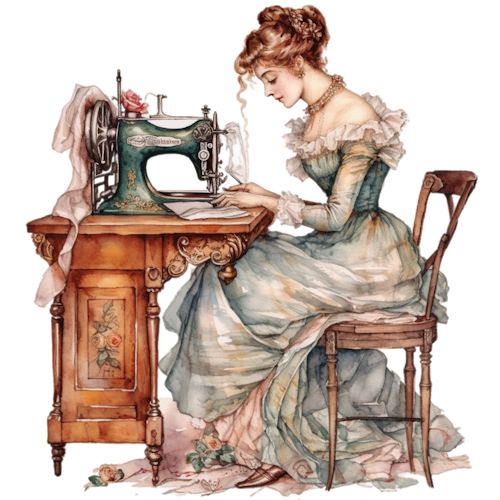Introduction
Sewists are the unsung heroes of the fashion world - the skilled artisans who bring clothing designs from concept to creation.
While fashion designers sketch and envision new styles, sewists work behind the scenes (or often right beside the designers and patternmakers: cutting fabric, stitching seams, and perfecting fit to turn those ideas into actual garments.
In the broader fashion design and production process, the role of the sewist is pivotal; without sewists, even the most brilliant design would remain just a drawing on paper. This article introduces what sewists do, how they collaborate with designers and patternmakers, and how you as a sewing enthusiast can develop the skills and experience to turn a sewing hobby into a successful at-home business.
The Sewist's Role in fashion Design & Production
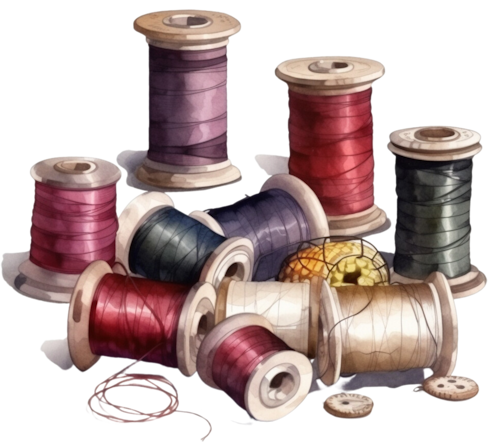
In the fashion industry, a sewist (sometimes called a seamstress/seamster or sewing technician) is responsible for constructing garments and often for helping refine designs through their technical expertise. They transform designers' sketches and patterns into prototype garments and finished products, bridging the gap between creative design and wearable clothing. On any given project, a professional sewist's tasks might include:
- Interpreting patterns or sketches: Reading and sometimes adjusting patterns, or even drafting patterns for custom pieces.
- Cutting and sewing fabric pieces: Selecting appropriate fabrics and sewing techniques to assemble the garment.
- Measuring and fitting: Taking precise measurements of clients or models and conducting fittings to ensure the garment drapes and fits correctly.
- Making alterations and refinements: Tweaking seams, hems, and other details for comfort and style, and fixing any issues in the sample.
- Finishing and detailing: Adding zippers, buttons, linings, and doing pressing/ironing for a professional finish.
- Repair and customisation: In some cases, repairing garments or off-the-rack clothes to client needs.
In short, sewists handle the technical execution of fashion. They often design, create and repair clothing using impressive fashion knowledge and sewing capabilities, whether in a factory setting for mass production or an independent business for custom work.
By producing the actual garments, sewists ensure that fashion designers' ideas can be worn and enjoyed by customers. This production role is a critical part of the overall fashion design process - without skilled sewists (and related roles like patternmakers and sample makers), a design might never make it to the runway or the retail rack.
Collaborating with Fashion Designers and Patternmakers
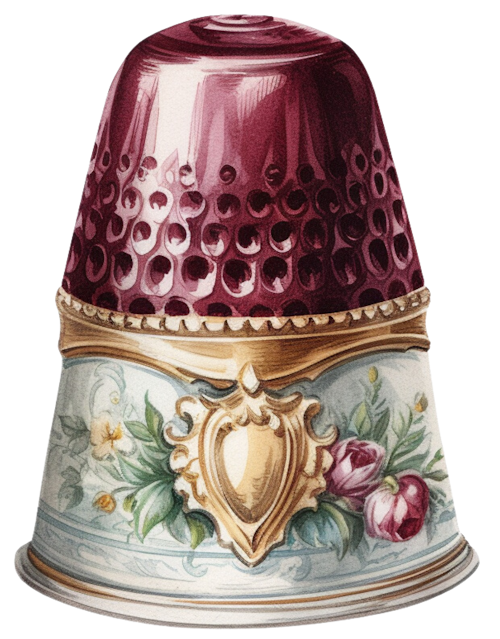
While designers are responsible for the creative vision - silhouettes, colours, and artistic direction - sewists contribute practical expertise to bring these visions to life.
Collaboration between a fashion designer and a sewist is often a two-way street: the designer provides the concept and styling, and the sewist advises on construction, executes the sewing, and offers feedback from a maker's perspective.
Historically, fashion designers and sewists were one and the same - iconic designers of the past (like Charles Frederick Worth or Mary Quant) were also masterful sewists who created their own samples.
In modern times, especially in larger companies, these roles are usually separate but still closely interconnected. For example, in a couture house or small design studio, a designer might sketch a garment and choose fabric, and a patternmaker produces the patterns, but it's the sewist (or a team of sample makers) who will cut the fabric, sew the first prototype, and help refine the piece.
During this process, fashion designers create the sketch, the patternmaker who produces the pattern, but the sewists exists as the do-er to physically realise the idea. They are all creators in their own right - one in concept, one interpreting the design, and the other in execution - and each needs the other for fashion to exist.
How does a sewist complement a designer and patternmaker? Sewists contribute deep knowledge of textiles, garment construction, and fit that can greatly inform the design and patternmaking processes. For instance, a designer might envision a certain dress design and a patternmaker create the architecture, but a sewist can advise if a different seam technique is needed for durability, or if a particular fabric will drape as intended.
Sewists are also often attuned to practical details like sizing and cost. They can guide designers and patternmakers on achieving better fit across various body types and adjust designs to be more cost-effective by suggesting alternative fabrics or construction methods.
In fact, designers often learn from sewists about fit and pricing considerations - a sewist knows how a design translates to real-world materials and what it takes to produce it within a target cost. This kind of feedback is invaluable: it ensure that a design is not only beautiful but also manufacturable and wearable.
In many cases, especially for small fashion labels or home businesses, the sewist, the patternmaker and the designer may be the same person. If you are an at-home sewing entrepreneur, you might design your own garments, draft the patterns, cut the fabric and then sew them yourself, essentially wearing all the hats. However, even if you only focus on sewing, understanding the designer's and patternmaker's perspectives helps you collaborate better.
Clear communication is key: as a sewist, being able to understand design sketches and patterns, ask the right questions, and possibly even make design suggestions will make you a treasured partner in any fashion project. Remember that the fashion designer's vision comes to life through your skills - as a collaborator, you play a critical role in the creative process of fashion.
Education and Training Pathways for Sewists
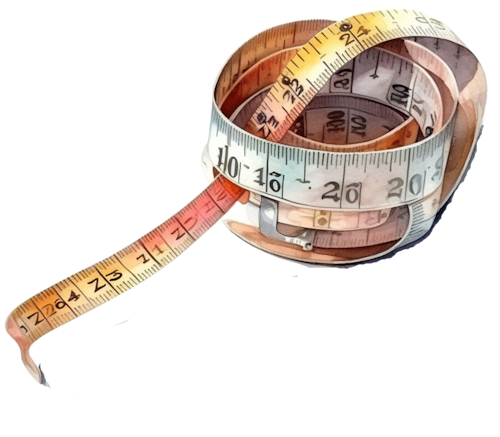
One of the great aspects of pursuing a career as a sewist today is that there are many education pathways to build your skills. Whether you prefer formal schooling or hands-on learning, you can tailor your training to fit your goals. Here we outline both formal and informal routes, as well as certifications, that can prepare you for professional sewing work.
Formal Education (Degrees and Diplomas)
Many sewists start with formal training in fashion or apparel design. You might pursue an associate or bachelor's degree in fashion design, fashion technology, or apparel production.
These programs typically cover patternmaking, garment construction, textiles, and fashion history.
There are also vocational programs and community college courses focused specifically on sewing and tailoring. Such programs often take one to two years and focus on improving technical skills, such as fittings and alterations, clothing creation, fabric selection and more.
Upon completion, you usually receive a diploma or certificate and have created a portfolio of projects which can help when seeking employment.
Formal education provides a structured curriculum and often access to industry equipment and internships, which can be very beneficial.
Informal Learning (Self-Taught and Workshops)
Not all professional sewists go through college programs. Plenty of successful sewists are self-taught or learn through informal means.
If you're motivated, you can learn the trade by combining resources like books, online tutorials, and good old trial-and-error at your sewing machine.
Start with the basics (operating a sewing machine, understanding patterns, basic stitches) and gradually move to advanced techniques (like draping, couture methods, etc.)
There are countless YouTube tutorials, sewing blogs, and online classes for every skill level.
Additionally, consider local resources: community centres, fabric stores, or sewing machine dealers often host sewing classes and workshops for various skillsets.
The key is consistent practice. As one career guide notes: "Developing crucial technical skills through practice or training - measuring, cutting fabric, using sewing tools, etc. - is an important first step before pursuing a sewing career".
If you're teaching yourself, set a curriculum (for example, work through a beginner sewing book or online course) to ensure you build a strong foundation in all the essentials.
Apprenticeships and On-The-Job Training
Another excellent pathway is learning by working under experienced professionals.
You might start in an entry-level role at a tailor shop or costume/fashion studio, or even as a sewing machine operator in a production setting, to pick up practical skills.
An apprenticeship (formal or informal) means you get mentorship from a seasoned sewist or tailor. This hands-on training is invaluable - you learn the real-world operations of professional sewing businesses and get on-the-job training, which helps you understand how a shop runs and how to work efficiently.
Over time, an apprenticeship can greatly improve your technical skills and even lead to a job offer.
While not always required, working closely with a professional seamstress or seamster, allows them to relay their knowledge and skillset so you can accelerate your learning.
If you have the chance to apprentice or even just assist in a local design house or alterations shop, take it!
It can also be a networking opportunity in the industry.
Professional Certifications
Although not mandatory, certifications can enhance your credibility if you plan to turn professional.
There are organisations (like the Association of Sewing and Design Professionals (ADSP) in the USA) that offer certification programs for sewing professionals. For example, the ASDP offers the Master Sewing and Design Professional (MSDP) and Master Alteration Specialist (MAS) certifications which are national, performance-based programs to certify advanced sewing and design skills.
In Australia and New Zealand, sewing certifications typically involve completing vocational education courses such as Certificate II or III in Apparel, Fashion and Textiles or similar qualifications. These programs equip individuals with skills in sewing, patternmaking, and working with fabrics. In Australia, the Australian Qualifications Framework (AQWF) is used, while New Zealand Qualifications Framework (NZQF) is used in New Zealand.
In the UK, sewing certifications can range from basic beginner courses to more advanced diploma programs and teacher training. Some options include online courses offering QLS or CPD certificates, while others offer more in-depth qualifications like Diplomas in Dressmaking or sewing for business. For those looking to teach, Palmer/Pletsch offers a certification program for sewing instructors.
These programs test a sewist's knowledge in key areas like fabric, design, fashion illustration, fit, garment construction, pattern development and professional practices.
Earning such credentials is a way to validate your expertise and can be a prestigious addition to your resume - it signals to clients or employers that you uphold high standards of workmanship and have proven skills.
Aside from these, there may be local or online certificate courses (for example, in specific skills like bridal, tailoring, or industrial sewing).
While you don't need certification to be a successful sewist, if you enjoy structured learning and want a credential, these are some of the options to consider.
In summary, your education as a sewist can be pieced together from various sources. Some people combine approaches - e.g., take a few courses for fundamentals, then learn specialised techniques from a mentor, and perhaps later get a certification in a niche skill.
What matters most is that you achieve proficiency in sewing techniques and garment construction, and build a strong portfolio of work (more on that shortly).
Choose the path that fits your life, budget and learning style. Whether through a university fashion program or countless late nights sewing at home, every bit of knowledge and practice will contribute to your growth as a professional sewist.
Essential technical and Creative Skills for Success
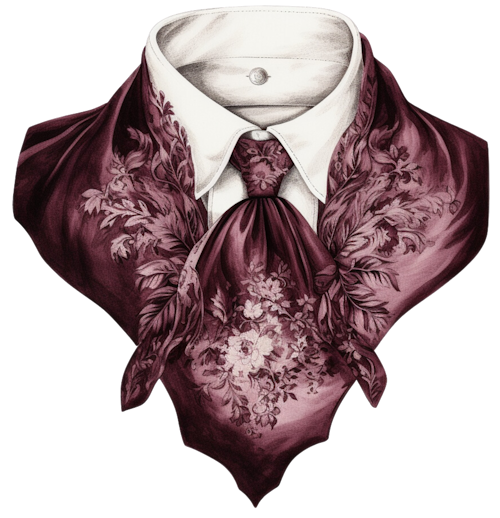
To thrive as a sewist in the fashion industry, you'll need to develop a blend of technical prowess and creative insight. Sewing for others (and eventually for paying clients) requires more than just basic stitch knowedge - you must truly master your craft.
Below are some of the key skills and competencies that successful sewists cultivate.
Pattern Reading and Garment Construction
The ability to read and interpret sewing patterns is fundamental.
As a sewist, you should be comfortable working with commercial patterns (with all their notches and instructions) and also be able to work from a designer's custom pattern or draping.
Over time, you may also learn pattern drafting - creating or adjusting patterns yourself to achieve a desired design or fit.
Mastering garment construction techniques (seams, darts, pleats, linings, etc.) is part of this skill set.
A strong understanding of these building blocks of clothing enables you to tackle a wide range of projects and to troubleshoot when something in the assembly isn't working. In fact, having a strong understanding of sewing knowledge and skills is imperative to perform the job well. The more you sew different patterns and styles, the more intuitive construction will become.
Fabric and Material Knowledge
A sewist must become friends with fabrics. Different textiles behave very differently - consider the contrast between a slinky silk satin and a sturdy denim.
Knowing how fabrics, drape, stretch, fray, or take to pressing will guide you in choosing the right material for a project and adjusting techniques accordingly. For example, you'll handle a knit fabric (which stretches) in a different way than a non-stretch woven fabric.
You should also learn about interfacing, linings, thread types, trims, and much more.
This textile knowledge often comes from experience and research (don't be afraid to do burn tests or stretch tests on fabric swatches to understand them).
A designer (or commercial pattern instructions) might specify a certain fabric for a garment - it's the sewist's job to know how to cut and sew that material properly, or to suggest a better alternative if needed.
Over time, you'll also get familiar with sourcing quality materials within budget, a skill that adds value especially if you run your own business.
Machine Operation and Sewing Techniques
Proficiency with your tools - especially your sewing machine (and other equipment like sergers/overlockers, coverstitch machines, or industrial machines if you use them) is essential. You should know your machine's functions and how to maintain it (cleaning, oiling, changing needles) to avoid downtime.
Similarly, understanding various stitch types and seams (e.g., French seam, flat-fell seam, blind hem) and knowing when to use them will improve the professionalism of your work.
Skilled sewists also handle pressing tools well: ironing and pressing at each stage of construction is key to a crisp final product.
Essentially, the sewing machine is an extension of your hands - practice controlling fabric feed, sewing straight and curved lines accurately, and using any attachments (buttonholer, zipper foot) proficiently.
If you get into specialised areas, you may need other tools (for example, embroidery machines or tufting tools), but for garment sewing, a solid-all-purpose machine and overlocker, and the skills to use them expertly, will cover most needs.
Fit and Alteration Skills
One area that distinguishes professional sewists is the ability to achieve a great fit. This means you need to understand body measurements, shaping garments through darts or seam adjustments, and common fitting adjustments (like modifying a pattern for a fuller bust, adjusting shoulder width, lengthening or shortening patterns, etc.).
Being skilled in alterations is incredibly useful - whether you're making a custom piece from scratch or tweaking an existing garment, knowing how to analyse fit problems and solve them is crucial.
You should practice fitting garments on real people (friends or clients), as this hands-on experience teaches you how to pin and adjust for comfort and look. Clients will especially appreciate a sewist who can not only sew a garment but also tailor it perfectly to their body.
Attention to Detail and Quality Control
Sewing professionally requires a keen eye for detail. Small mistakes like uneven topstitching, misaligned seam junctions, or rough finishing can detract from the quality of a garment.
Cultivate the habit of doublechecking your work and being meticulous. For instance, when cutting, make sure grainlines are straight; when sewing, maintain consistent seam allowances; when finishing, trim loose threads and press seams flat. This attention to detail goes a long way in producing polished, boutique-quality items.
As noted in one resource, having impeccable attention to detail helps you catch any sewing or cutting mistakes and ensure everything matches the design specs. It also means following instructions carefully and keeping accurate measurements.
Quality control is especially important if you plan to sell your work - customers notice craftsmanship!
Creativity and Problem-Solving
Sewing is both a technical and a creative pursuit.
Creativity will help you find unique solutions when you encounter challenges (and you will encounter them!).
Maybe you need to substitute a trim that's out of stock, or the fabric isn't behaving as expected - a creative sewist can improvise and still achieve the desired look.
Strong problem-solving skills are important for dealing with the unexpected issues that arise in making garments. For example, if a garment doesn't fit as envisioned, you might add an extra seam or decorative element to fix the issue and make it appear intentional. This kind of on-the-fly thinking develops with experience.
Additionally, creativity is what makes sewing fun and personal - even if you're working from someone else's design, your artistic touch in how you execute stitching or finishes can shine through. Embrace that artistic side, whether it's picking up a particularly beautiful lining fabric or finding a clever way to upcycle leftover scraps into the design.
Communication and Customer Service
If you aim to work directly with clients (or with a designer as a collaborator), communication is a key skill as well.
You should be able to listen to what a client wants and explain what can or can't be done in a tactful way.
Guiding a customer through fabric choices or design tweaks requires patience and clarity.
Good communication also matters if you're teaming up with designers - understanding their vision and providing feedback in a respectful, constructive manner.
Many successful at-home sewists also have to provide great customer service: this can mean being responsive, meeting deadlines, and making the experience pleasant so that clients will recommend you to others. It might not be a 'technical' sewing skill, but it's certainly important for sustaining a sewing business.
As a newcomer, don't be daunted by this long list. You don't need to be an expert in everything at once. These skills develop over time with education and practice. The journey of mastering them is part of what makes sewing a rewarding craft.
Focus on building a strong foundation of the basics - tools, fabrics, accurate sewing - and then keep adding to your skillset.
In the fashion industry, you'll never stop learning, whether it's a new sewing technique or a trend in fabrics. With each project you'll gain experience and confidence in these essential skills.
Hands-On Experience: Building a Portfolio and Gaining Clients
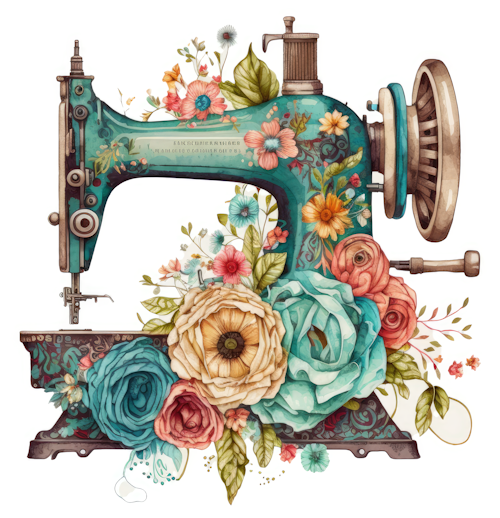
No matter how much coursework or self-study you have, nothing replaces hands-on experience in sewing.
Sewing is a craft where you learn by doing - each project teaches you something new or helps refine your technique.
If you aspire to turn professional, gaining real experience is not only personally enriching but also something future clients or employers will look for.
One of the first benefits of hands-on experience is building a strong portfolio of your work. In creative fields like fashion, a portfolio is often more important than a resume. It's a collection of examples that show what you can do - and it speaks louder than words.
As you complete sewing projects, take quality photos of the finished garments. Include a variety of pieces in your portfolio: perhaps a dress you made, a tailored jacket, a pair of custom-fit pants, or before-and-after images of a complicated alteration. If you studied formally, you might already have a portfolio from school (often including photos of custom garments and even sketches of designs you've made). If not, you can build one on your own by sewing for yourself, friends, or small freelance projects.
Over time, your portfolio will demonstrate your range and growth. Make sure it highlights your best work and things you want to be hired to do. For instance, if you love evening gowns, include that; if you excel in alterations, show dramatic fixes.
How do you get those first projects and clients? Often, it starts with your immediate network. You might volunteer to sew a costume for a local play, alter a bridesmaid dress for a friend, or make a custom shirt for a family member.
Even if you charge only a minimal fee (or nothing at first) to build experience, treat these initial projects professionally - the results and word-of-mouth can lead to paying clients. As you gain confidence, start charging fair prices for your work.
You can also look for entry-level jobs that provide experience: working in a bridal alterations boutique, for example, will teach you a lot about fitting formalwear and dealing with customers.
Some sewists take on small contract jobs (for local designers or Etsy shop owners who need sewing help) to build their resume.
Every bit of experience counts and becomes a story you can tell future clients (Yes, I've installed dozens of invisible zippers - I mastered that while working at a gown shop, for example).
When showcasing your portfolio and trying to gain clients, presentation and marketing matter. Consider creating a simple website or social media page for your sewing business where you can display photos of your work.
In today's digital age, having an online presence is extremely helpful. A professional website acts as your online storefront and allows potential clients to learn more about your services, view your portfolio, and even make inquiries easily.
Use social media platforms like Instagram, Pinterest of Facebook to share your latest projects and behind-the-scenes looks at your process - this not only demonstrates your skill but also your passion and professionalism.
Engaging with local community events can help too: for instance participate in a craft fair or a local fashion show to get your name out there.
Networking through sewing circles, the American Sewing Guild (ASG), the Australian Sewing Guild (AUSSEW), or fashion meetups can connect you to people who may need your services or who can refer clients to you.
Importantly, hands-on experience also builds your reputation - something that is priceless in an at-home sewing business. Happy clients will recommend you to others.
As you accumulate successful projects, ask clients for testimonials or permission to share before-and-after examples of your work.
Over time, you'll establish yourself as a reliable sewist in your community or niche.
Keep in mind that the fashion industry values experience greatly. According to the U.S. Bureau of Labor Statistics, the job outlook for sewing professionals is modest, but those who continuously improve their technical skills and build a strong creative portfolio have better chances of finding opportunities.
Note: Check out the Australian Fashion Council economic report here.
This indicates that your proactive efforts in gaining experience and showcasing your talents can truly pay off. Whether your goal is to freelance, start a boutique, or work for a designer, a combination of real-world experience and a solid portfolio will open doors.
Real-World Applications and Opportunities for Sewists

One exciting aspect of becoming a sewist today is the diverse array of real-world applications for your skills. With the rise of small brands, online marketplaces, and a DIY craft culture, skilled sewists are in demand for various projects. Here area a few avenues where sewists play a key role.
Custom Garment Creation
This is the classic role of a seamstress/tailor - making one-of-a kind clothing for individual clients. If you enjoy working one-on-one, you can create custom garments like wedding dresses, prom gowns, suits, or everyday wear tailored exactly to a clients measurements and preferences.
Customers love the personal fit and uniqueness of custom-made clothing. As a sewist, you'd handle everything from consulting on the design, choosing fabrics, taking measurements, creating the pattern, and sewing the garment to perfection.
It's a rewarding process because you see a garment through from start to finish and make someone's vision (or your own design) come true.
Bespoke tailoring and dressmaking can be a lucrative niche once you build a reputation for quality. Even in an era of mass production, many people seek out custom clothing for special occasions or for fit reasons, so there's a meaningful market for this service.
Small-Batch Production for Independent Designers
Not all fashion is produced in large factories. Many independent fashion designers or boutique brands produce limited quantities of their designs - and they often need skilled sewists to do this small-scale manufacturing.
If you prefer working on design collections rather than individual client commissions, you could partner with a designer (or be a designer yourself) and handle the small-batch production of a line of garments.
Small-batch generally means producing a limited run of each design (for example 10 - 50 pieces rather than thousands) and prioritising quality. As a sewist, you might be sewing multiple copies of the same design in different sizes. This requires efficiency and consistency in your work.
The advantage of small-batch is that it allows emerging designers to produce locally and maintain quality control, and it gives sewists the opportunity to work on a variety of designs each season. You become an important part of that designer's supply chain - essentially the production department for their brand.
This can even be an at-home operation if you have a robust sewing setup.
It's worth noting that many start-up fashion labels are willing to work with freelance or home-based sewists for their first collections. By doing small-batch production, you contribute to the fashion ecosystem by helping new styles reach the market without the need for large factories.
Alterations and Repairs
Almost every community has a need for alteration experts. From hemming trousers and adjusting the fit of jackets, to modifying bridal gowns, alterations are a steady source of work for many sewists.
Running an alterations service can be a great way to start a home-based business - it has lower material costs (since clients bring you existing garments to fix) and it addresses a common need.
Don't underestimate the value of being skilled in alterations: clothes off the rack rarely fit everyone perfectly, and people are willing to pay to make their clothing look and feel better.
As an alteration specialist, you might also handle clothing repairs (mending tears, replacing zippers) which is another important service.
Some sewists make a full-time living with alterations alone (for instance, focusing on wedding dress alterations, which are highly specialised.
Even if you want to do original sewing, offering alterations can bring in clients and income while you build up other parts of your business.
It's also an excellent way to hone your fitting skills, because you see how garments from various brands are constructed and how to improve them.
Beyond these examples, sewists find many other applications:
- Costume design and sewing for theatre or cosplay communities.
- Home décor sewing (like draperies, cushions, slipcovers).
- Teach sewing classes or workshops.
- Making and selling handcrafted items (bags, accessories, children's clothing) on platforms like Etsy, and more.
Whether you dream of creating one-of-a-kind garments or providing alterations and repairs, a sewing business offers endless opportunities to showcase your skills. The key is to find your niche or the mix of services that you enjoy and that has market demand.
When starting out, you might try a bit of everything to see what you enjoy most and what clients respond to. Some at-home sewists begin with alterations for income, while slowly launching a custom clothing line as their passion project.
Others might collaborate with a local designer from the beginning.
There's no single correct path - the fashion design process can take many forms, from a couture atelier to a home studio.
What all these avenues have in common is that they rely on the sewist's skill to deliver a quality product. Every garment that gets sold or worn has passed through the skilled hands of someone who made it. By developing your craft, you open up these various professional opportunities for yourself in the world of fashion.
Conclusion: From Hobbyist to professional - You Can Do It!
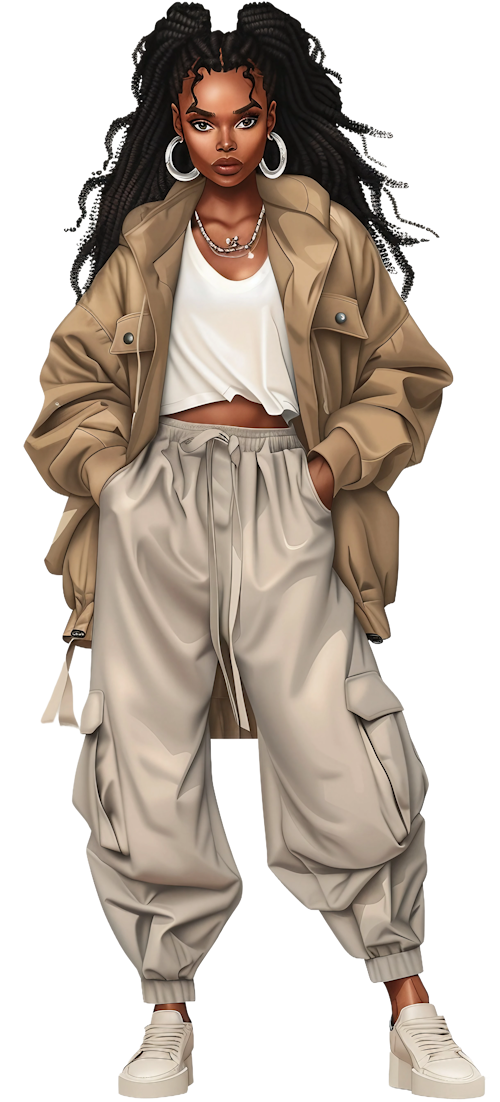
Turning your love of sewing into a fashion career is an exciting journey. As we've explored, the role of a sewist is integral to the fashion design process - you are the person who makes fashion tangible.
For newcomers dreaming of starting an at-home sewing business, know that every expert sewist started somewhere. Today, you might be sewing simple skirts or mending clothes as a hobby; next year, you could be collaborating with a fashion designer on their new collection or delighting a client with a custom outfit that fits them perfectly.
The transition from hobbyist to professional sewist will require dedication, practice, and learning, but it is absolutely achievable. Start by building your skills and knowledge step-by-step, and don't be afraid to seek education (be it a class, a degree, or an online tutorial series).
Embrace each project as a learning opportunity and gradually take on more challenging tasks - this is how you grow.
Also engage with the sewing community: join sewing groups or forums, attend local fashion events, or become a member of organisations like the Australian Sewing Guild to meet like-minded people. Networking can open doors and also provide you with support and advice as you progress.
When you feel the time is right, take the leap into doing work for others. Maybe it's a paid alteration job or a custom commission - treat it professionally and see how it feels.
With each happy client and each beautiful garment you produce, your confidence will build.
Remember to keep updating your portfolio and resumé with these experiences.
Over time, what once was a hobby in your spare room could flourish into a full-fledge at-home business. Many successful sewing entrepreneurs will tell you that the beginning is the hardest part - but also the most exciting, because every new client or project is a milestone.
Finally, stay inspired. fashion is constantly evolving, and as a sewist, you get to be a part of that dynamic world. Continue to follow fashion trends, but also hone your personal style and strengths
Maybe you'll become known for your impeccable tailoring, or for using sustainable materials, or for stunning evening gowns - lean into what you love.
Your passion for sewing is your greatest asset. It's the drive that will keep you practicing late into the night or experimenting with a tricky technique until you master it.
That passion, combined with the knowledge and skills you acquire, will propel you forward.
In conclusion, the role of the sewist in the fashion design process is both crucial and rewarding, blending creativity with technical skill. Whether you're collaborating with designers or crafting your own collections, you have the power to turn ideas into wearable art.
So keep learning, keep sewing, and keep believing in yourself. With patience and perseverance, you can transform your sewing hobby into a thriving professional career - and help shape the fashion of the future, one stitch at a time.

